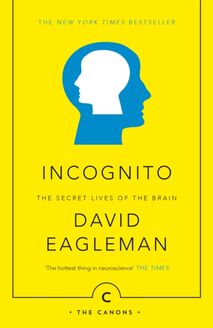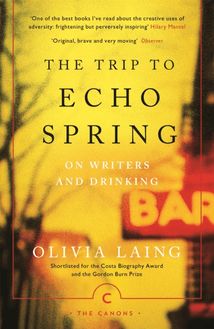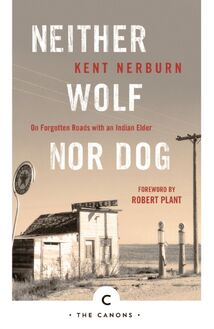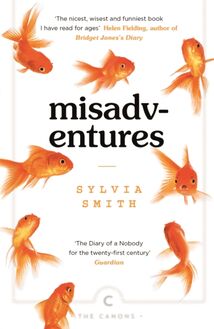-
 Univers
Univers
-
 Ebooks
Ebooks
-
 Livres audio
Livres audio
-
 Presse
Presse
-
 Podcasts
Podcasts
-
 BD
BD
-
 Documents
Documents
-
- Cours
- Révisions
- Ressources pédagogiques
- Sciences de l’éducation
- Manuels scolaires
- Langues
- Travaux de classe
- Annales de BEP
- Etudes supérieures
- Maternelle et primaire
- Fiches de lecture
- Orientation scolaire
- Méthodologie
- Corrigés de devoir
- Annales d’examens et concours
- Annales du bac
- Annales du brevet
- Rapports de stage
La lecture à portée de main
Vous pourrez modifier la taille du texte de cet ouvrage
Découvre YouScribe en t'inscrivant gratuitement
Je m'inscrisDécouvre YouScribe en t'inscrivant gratuitement
Je m'inscrisEn savoir plus
Vous pourrez modifier la taille du texte de cet ouvrage
En savoir plus

Description
Informations
| Publié par | Canongate Books |
| Date de parution | 07 mars 2013 |
| Nombre de lectures | 0 |
| EAN13 | 9781782111177 |
| Langue | English |
Informations légales : prix de location à la page 0,0440€. Cette information est donnée uniquement à titre indicatif conformément à la législation en vigueur.
Extrait
Ruth Ozeki is a novelist, filmmaker and Zen Buddhist priest. She is the author of The Book of Form and Emptiness which won the Women’s Prize for Fiction in 2022, My Year of Meats , All Over Creation and A Tale for the Time Being , which was shortlisted for the 2013 Man Booker Prize and translated into 28 languages. Ozeki has also written a short memoir, Timecode of a Face . She is affiliated with the Everyday Zen Foundation and lives in Northampton, Massachusetts, where she teaches creative writing at Smith College and is the Grace Jarcho Ross 1933 Professor of Humanities. ruthozeki.com
Also by Ruth Ozeki
Fiction A Tale for the Time Being My Year of Meats The Book of Form and Emptiness Nonfiction Timecode of a Face
The Canons edition published in Great Britain in 2022 by Canongate Books First published in Great Britain in 2013 by Canongate Books Ltd, 14 High Street, Edinburgh EH1 1TE This digital edition first published in 2013 by Canongate Books canongate.co.uk Copyright © Ruth Ozeki Lounsbury, 1998 The right of Ruth Ozeki Lounsbury to be identified as theauthor of this work has been asserted by her in accordancewith the Copyright, Designs and Patents Act 1988 First published in the United States of America in 2003 by Penguin Putnam Inc., New York First published in Great Britain in 2003 by Picador British Library Cataloguing-in-Publication Data A catalogue record for this book is available on request from the British Library ISBN 978 1 78689 875 3 eISBN 978 1 78211 117 7
To my father, who was always kind
Contents
first
second
third
fourth
fifth
sixth
seventh
epilogue: daddy’s letter
first
Esto Perpetua
("May It Be Forever")
Idaho state motto
in the beginning
It starts with the earth. How can it not? Imagine the planet like a split peach, whose pit forms the core, whose flesh its mantle, and whose fuzzy skin its crust no, that doesn’t do justice to the crust, which is, after all, where all of life takes place. The earth’s crust must be more like the rind of the orange, thicker and more durable, quite unlike the thin skin of a bruisable peach. Or is it? Funny, how you never think to wonder.
On one small section of that crust small, that is, by global or geologic measure in Power County, Idaho, where the mighty Snake River carved out its valley and where volcanic ash enriched the soil with minerals vital to its tilth, there stretched a vast tract of land known as Fuller Farms.
Vast, by human scale. Vast, relative to other farmers’ holdings in the region, like the Quinns’ place down the road. And as for the description, "land belonging," well that’s a condition measured in human time, too. But for one quick blip in the 5 billion years of life on this earth, that three thousand acres of potato-producing topsoil and debatably the slender cone of the planet that burned below, right down to the rigid center of its core, belonged to my father, Lloyd Fuller.
It used to be the best topsoil around. Used to be feet of it, thick, loamy. There’s less of it now. But still, imagine you are a seed of an apple, or a melon, or even the pit of a peach spit from the lips of one of Lloyd’s crossbred grandchildren, arcing through the air and falling to earth, where you are ground into the soil, under a heel, to rest and overwinter. Months pass, and it is cold and dark. Then slowly, slowly, spring creeps in, the sun tickles the earth awake again, its warmth thaws the soil, and your coat, which has protected you from the winter frosts, now begins to crack. Oh, so tentatively you send a threadlike root to plumb the ground below, while overhead your pale shoot pushes up through the sedentary mineral elements (the silt, the sand, the clay), through the teeming community of microfauna (bacteria and fungi, the algae and the nematodes), past curious macrofauna (blind moles, furry voles, and soft, squirming earthworms). This is life in the Root Zone, nudging your tendril toward the warmth of the sunny sun sun.
And then imagine the triumphant moment when you crack the crumbly crust, poke your wan and wobbling plumule head through the surface and start to unfurl imagine, from your low and puny perspective, how vast Lloyd Fuller’s acreage must look to you now.
Of course, during most of his tenure and the decades that followed, these three thousand acres were given over primarily to the planting of potatoes, which means that you, being a random seedling, a volunteer, an accidental fruit, will most likely be uprooted. Just as you turn your face into the rays and start to respire, maybe even spread out a leaf or two and get down to the business of photosynthesizing grrrrrip, weeded right out of there. Sayonara, baby.
That’s what it felt like when I was growing up, like I was a random fruit in a field of genetically identical potatoes. Burbanks that’s what people planted. Centuries of cross-pollination, human migration, plant mutation, and a little bit of backyard luck had resulted in the pride of Idaho, the world’s best baker, the Russet Burbank. From one side of the state to the other spread a glorious monoculture of these large, white, long-bodied tubers with rough, reticulated skin, high in solids content with a mealy texture when cooked and a pleasing potatoey flavor.
Honestly, I never liked potatoes much. I preferred rice, a taste I inherited from my mother, Momoko, and which, in a state of spuds, was tantamount to treason. Momoko used to make me rice balls, the size of fingerlings, to take to school in my lunch box. Lloyd called them "Tokyo tubers" this was his idea of a joke and when I was a little girl, I thought it was pretty funny, too. I used to look forward to lunchtime, opening my plastic Barbie box, where, nestled next to a slice of meat loaf or ham, I’d find the two little o-musubi sitting neatly side by side. They tasted faintly salty, like Momoko’s small hands. If the other kids thought my lunch was queer, they didn’t say much, because Lloyd Fuller had more acres, and thus more potatoes, than almost any other farmer in Power County, and I was Yummy, his only child.
No one said much either when Lloyd brought my mom home from Japan after the war, at least not to his face. Just that she was the cutest thing they had ever seen, so delicate and fragile looking, like a china doll, and how was she ever going to handle the work of running a farm? But she did. Lloyd had inherited five hundred acres, adjacent to the Quinns’ place and up from where the Snake River was dammed, and he and Momoko rolled up their sleeves and went to work. People used to smile, call them Mutt and Jeff, because Lloyd was one of the tallest men in Power County and Momoko bought her work clothes in the little boys’ department at Sears. You can imagine the two of them, standing in the fields, side by side, Lloyd as tall as a runner bean stalk and Momoko barely coming up to his buckle. Dressed in jeans turned up at the cuff and hanging from her shoulders by suspenders, she looked like Lloyd’s son instead of his wife. The son they never had. After twelve years of trying, they had me instead named me Yumi, only nobody in Liberty Falls could say it right. Yummy, yummy, yummy, I got love in my tummy. People said I was the apple of Lloyd’s eye, the pride of his heart, until I went rotten.
As it turned out, Momoko was a born gardener, or, as Cassie Quinn’s mom used to put it, "She may be yeller, but her thumb sure is green." Maybe this was meant to be a compliment, and we all took it that way. Over the years Momoko’s kitchen garden grew into a vegetative wonder, and she planted varieties of fruits and flowers that no one had ever seen before in Power County. I remember her whispering to her pea vines as they curled their way up her trellises: "Gambatte ne, tané-chan!" "Be strong, my little seedling!" People drove for miles to see her Oriental ornamentals and Asian creepers. Their massy inflorescence burst into bloom in the spring and stayed that way throughout summer and deep into the fall. It was truly exotic.
Momoko must have been proud of Fuller Farms, in the early days. Lloyd surely was. In the first years of their marriage, they battled droughts and early freezes, mildews and viruses and parasites, and a host of pests that nobody could imagine why God had even bothered to create:
Seedcorn maggots, leatherjackets, and millipedes.
Thrips and leafhoppers.
False cinch bugs, blister beetles, and two-spotted spider mites.
Hornworms, wireworms, white grubs, and green peach aphids, not to mention corky ringspot . . .
And, most dreadful of all, the rapacious Colorado potato beetle.
All these creatures were dealt with, and thank God for science.
"Insect infestations are one of the greatest threats to the production of high-quality tubers," Lloyd used to say in the introduction to the speech that he gave every year to the Young Potato Growers of Idaho. "It is crucial to plan the applications of pesticides to harmonize with seasonable cultural practices."
"Seasonable cultural practices" how he liked the sound of that! I remember him practicing the phrase, standing in front of the mirror in the bathroom, and when I stood there and looked at my reflection, I would practice saying it, too. Fuller Farms seemed living proof to us all that with the cooperation of God and science, and the diligent application of seasonable cultural practices, man could work in harmony with nature to create a relationship of perfect symbiotic mutualism. The first five hundred acres had grown to a holding of three thousand by the time I turned fourteen.
That was 1974, the year Nixon resigned, the year Patty Hearst was kidnapped and Evel Knievel attempted his historic leap across the Snake River Canyon on a rocket-powered motorcycle. But most important of all, it was the year of the Nine-Dollar Potato.
Consider the economics. Year after year you teeter along in a stable ’tater market, breaking even at $3.50 per hundred pounds of premium grade. When the
-
 Univers
Univers
-
 Ebooks
Ebooks
-
 Livres audio
Livres audio
-
 Presse
Presse
-
 Podcasts
Podcasts
-
 BD
BD
-
 Documents
Documents
-
Jeunesse
-
Littérature
-
Ressources professionnelles
-
Santé et bien-être
-
Savoirs
-
Education
-
Loisirs et hobbies
-
Art, musique et cinéma
-
Actualité et débat de société
-
Jeunesse
-
Littérature
-
Ressources professionnelles
-
Santé et bien-être
-
Savoirs
-
Education
-
Loisirs et hobbies
-
Art, musique et cinéma
-
Actualité et débat de société
-
Actualités
-
Lifestyle
-
Presse jeunesse
-
Presse professionnelle
-
Pratique
-
Presse sportive
-
Presse internationale
-
Culture & Médias
-
Action et Aventures
-
Science-fiction et Fantasy
-
Société
-
Jeunesse
-
Littérature
-
Ressources professionnelles
-
Santé et bien-être
-
Savoirs
-
Education
-
Loisirs et hobbies
-
Art, musique et cinéma
-
Actualité et débat de société
- Cours
- Révisions
- Ressources pédagogiques
- Sciences de l’éducation
- Manuels scolaires
- Langues
- Travaux de classe
- Annales de BEP
- Etudes supérieures
- Maternelle et primaire
- Fiches de lecture
- Orientation scolaire
- Méthodologie
- Corrigés de devoir
- Annales d’examens et concours
- Annales du bac
- Annales du brevet
- Rapports de stage




















